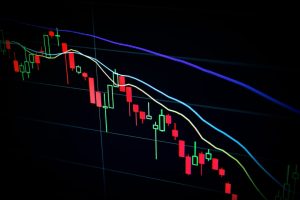The foreign exchange market, or forex, is the largest financial market in the world, with an average daily trading volume of over $5 trillion. In this market, currencies are bought and sold, with the aim of making a profit from the fluctuations in exchange rates between different currencies. But how exactly does the forex market move? In this article, we will explain the various factors that influence the movement of exchange rates.
1. Economic Indicators
The forex market is heavily influenced by economic indicators, such as GDP, inflation, unemployment, and interest rates. These indicators provide insight into the health of a country’s economy, and can influence the demand for its currency. For example, if a country’s economy is performing well, investors may be more likely to buy its currency, which will increase its value relative to other currencies.
2. Political Events
Political events, such as elections, policy changes, and geopolitical tensions, can also have a significant impact on the forex market. For example, if a country’s government announces a new economic policy that is seen as positive by investors, this can lead to an increase in demand for its currency. On the other hand, if there is political instability or uncertainty, investors may be more hesitant to invest in that country, which can lead to a decrease in demand for its currency.
3. Central Bank Policy
The policies of central banks, such as the Federal Reserve in the United States, the European Central Bank, and the Bank of Japan, can also impact the forex market. Central banks have the power to influence interest rates, which can affect the value of a country’s currency. For example, if a central bank raises interest rates, this can make a country’s currency more attractive to investors, which can lead to an increase in demand and an appreciation in value.
4. Market Sentiment
Market sentiment, or the overall mood and attitude of investors, can also influence the movement of the forex market. If investors are feeling optimistic about the prospects of a particular currency, this can lead to an increase in demand and an appreciation in value. On the other hand, if investors are feeling pessimistic, this can lead to a decrease in demand and a depreciation in value.
5. Technical Analysis
Finally, technical analysis is another factor that can influence the movement of the forex market. Technical analysis involves using charts and other tools to identify patterns and trends in exchange rates. Traders use this information to make predictions about future exchange rate movements and to make decisions about when to buy and sell currencies.
In conclusion, the forex market is influenced by a range of factors, including economic indicators, political events, central bank policy, market sentiment, and technical analysis. It is important for traders to stay up-to-date on these factors in order to make informed decisions about when to buy and sell currencies. By understanding the various factors that influence the movement of the forex market, traders can increase their chances of making a profit.






